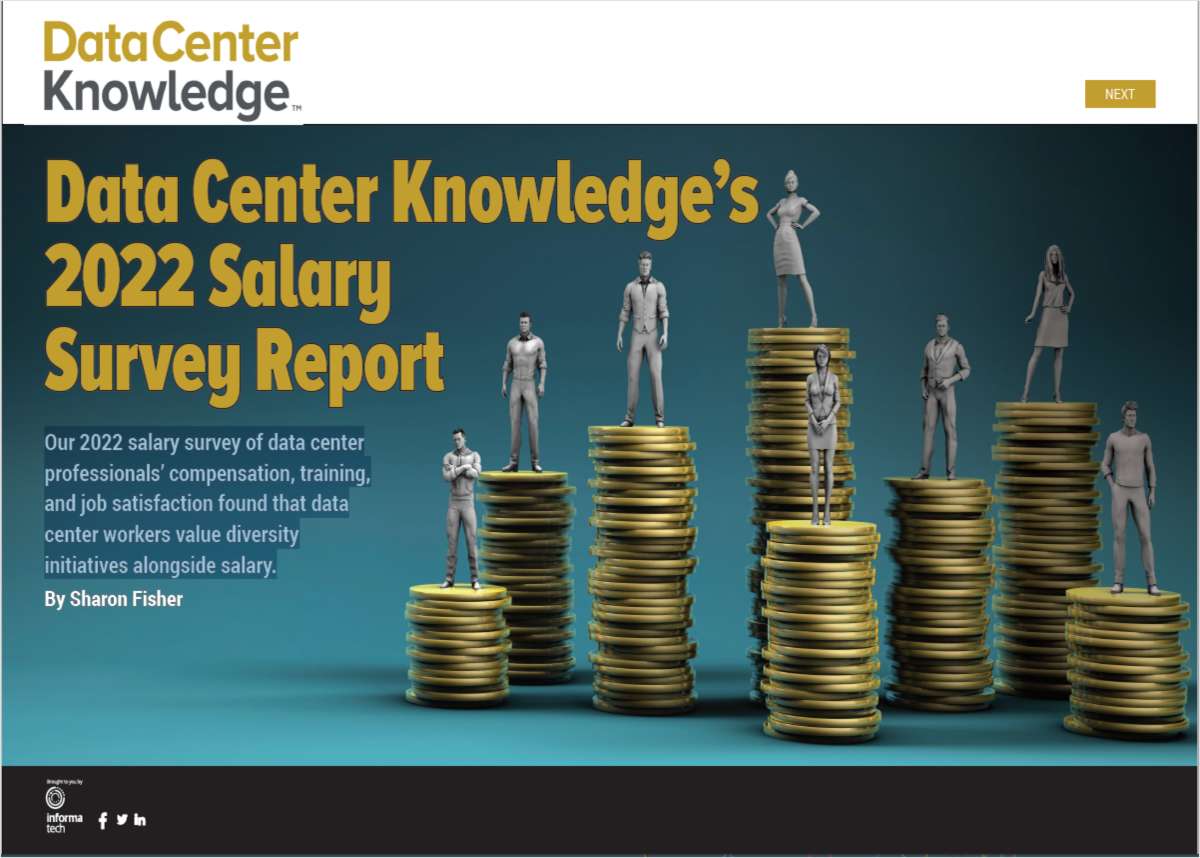Closing the gender gap may just be the solution to the skills gap issue in data center operations.
It may come as no surprise to you that the data center industry has more male than female people contributing to it. Data Center Knowledge’s recent Salary Survey confirmed what we know but how do we know with 85% of our respondents self-reporting as male and 10% as female with 7% choosing not to answer either way.
What’s more, respondents to the survey had a vast differential in median income in 2021 with male IT professionals making a median annual salary of $105,000 to female IT professionals’ $85,000.
The lack of diversity and unequal pay among men and women makes it increasingly hard to staff an industry vital in supporting societal progress though it often offers comparative job security and competitive salaries.
This poses a big problem in the near future as the industry faces an increased demand for data center services by enterprises across industries, particularly in the US and Canada. Data centers within the US alone are expected to have a 35 percent increased share of the market during the forecast growth period between 2021 to 2026.
“More needs to be done to eliminate the gender pay gap, which is a direct reflection of how women are valued in the workforce compared to men,” Ruth Thomas, Pay Equity Strategist at Payscale, said in a statement. “Fortunately, employers are finally starting to take pay equity seriously. What’s more, they are thinking beyond just gender and focusing on all unexplainable pay gaps. But with the pressure of rising wage inflation, minimum wage increases, and strong competition for talent, we can expect more pay compression and pay inequity issues to arise.”
With faster market growth in North America than in Europe, the Middle East, and Asia, employers are well aware that increasing the talent pool will be vital to staying competitive. To widen the pool of data center technician talent and make it more accessible, the sector needs to demystify what they do while promoting the range of job opportunities within it.
Bill Kleyman, Switch’s executive vice president of digital solutions said the fact that the industry has more men who are older and likely to retire in 10 years is one of the biggest challenges data centers are now facing.
“In our infrastructure space, that sort of compounds this challenge of getting new and young people to come into our industry,” Kleyman said.
Work needs to be done to close the gender pay gap and increase diversity among data center technicians. Organizations and governments can each do their parts to take concrete steps to address accessibility and pay equity: the former by promoting a work culture that views diversity as a strength, the latter by passing equity laws that require the disclosure of salary ranges on job listings.
Here are a few ways an organization can ensure increased diversity among data technicians and close the gender pay gap.
- Take action against the data center technician pay gap
Employees are usually discouraged from discussing pay rates with each other, with some organizations including clauses in their employee contracts expressly forbidding it. Increasing transparency around pay scales helps organizations minimize unconscious bias and make better salary decisions that lessen pay gaps.
- Look for inequalities throughout the data center technician work culture
Inequalities are usually built into an institution’s framework for years. To make substantive changes senior-level executives should define not only diversity but also what inclusion looks like.
- Anonymize data center technician job applications
Making applications anonymous by removing identifying details like a name leads to the selection of more diverse candidates according to the Harvard Business Review. Application anonymization is also effective in reducing the impact of racial and other biases.
- Encourage applicants for data center technician jobs to use transferable skills
Women apply for jobs they are most qualified for whereas men apply for jobs they feel confident about even if they don’t meet most of the qualifications. Job applications should use language that emphasizes applicable soft and transferable skills rather than direct experiences.
- Create data center diversity through greater career visibility
Kleyman suggests taking away the secrecy behind data centers and out-of-the-box recruitment efforts among women and minority populations would widen people’s awareness of the field.
- Offer flexibility for when and where work gets done
Offer workers the opportunity to adjust their schedules as they feel necessary. Women miss out on promotions or leave the workforce due to caretaking responsibilities.
In the end, diversity and pay parity is good for data center technicians and the industry. Facilitating a diverse applicant and employee pool as well as paying women the same as men only means a brighter future for the sector.
“We want more warm bodies and good human beings, especially people of diversity. [We need] more strong female leaders to be in this space so that we don't lose ideas, we don't lose innovation,” said Kleyman.






